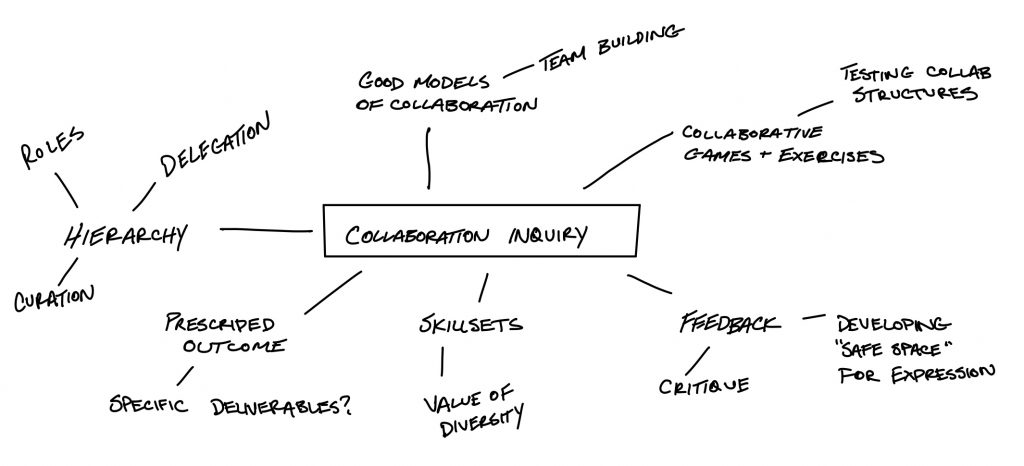
Coming to the end of semester I am confident about the overarching ideas that will be surrounding my research and practice going forward. I have a deep appreciation for Collaboration as it has been a pivotal aspect of my work and journey to where I am today. However I have come to discover through these past few months, through reviews with my Professor Cameron Neat and discussions with my classmates that my inquiry into collaboration will require some “context-building”. The experience I have had with Collaborative processes are nuanced and exist in Creative spaces with prescribed outcomes and deliverables (such as developing assets for Marketing campaigns or rollouts). I would like to explore creative collaboration from a wider scope. I organized the direction of my inquiry into a few different segments that allow me to develop language and context around my research.
The working Thesis question I have marinating is “How may we collaborate better?” This question requires some deeper exploration, again tying back to the “context-building”. What does it mean to collaborate better? What makes collaboration difficult? Which contexts and spaces truly benefit from implementing collaboration? How do we define the roles and what each collaborator brings to the space?
I aim to discover and dissect good models of collaboration; looking beyond creative contexts and turning to spaces such as sporting teams, exploring rapport, fostering chemistry, team building, and training. I hope to find ways to apply these practices into pre-production and bring tools into my practice. This aspect of my inquiry also spills into understanding and learning to give constructive and productive feedback, especially during the creative process to explore more possibilities. I hope to find ways to develop “safe space” for expression, giving room to collaborators involved to be able to input themselves and their experiences into the processes. This is an aspect of my practice I really enjoy, being able to bounce ideas off my peers and assist with working through creative blocks or obstacles in their own work.
Within all these models comes the question of Hierarchy. During a collaborative process, how can we move away from traditional top down models and work with “flat-hierarchy”. Pulling from Ezio Manzini in Resilient Systems, I see great value in a system where each individual collaborator is strong enough to function on their own, and is better informed when working with the larger system or group. Other questions I am exploring includewhat are the roles of everyone involved in a collaboration? How is the workload delegated amongst the collaborators? And How much / what limit of curation is required for completing collaborative work?
When it comes to understanding Value in a collaboration, I turn to each collaborators skills and experiences. By analyzing skillsets of those who are involved in a collaborative process I hope to understand how those skillsets fill in the gaps of one another. Specifically looking at this aspect of my inquiry, I was advised by Cameron Neat to dive deeper into the diversity of the collaborators, and understand the value of that diversity. I will be exploring not only creative diversity, but also taking some time to look into the cultural backgrounds and diversities that inform a collaborators practice. Below is a “funnel” illustration that aims to capture what parts of a collaborators life and experience
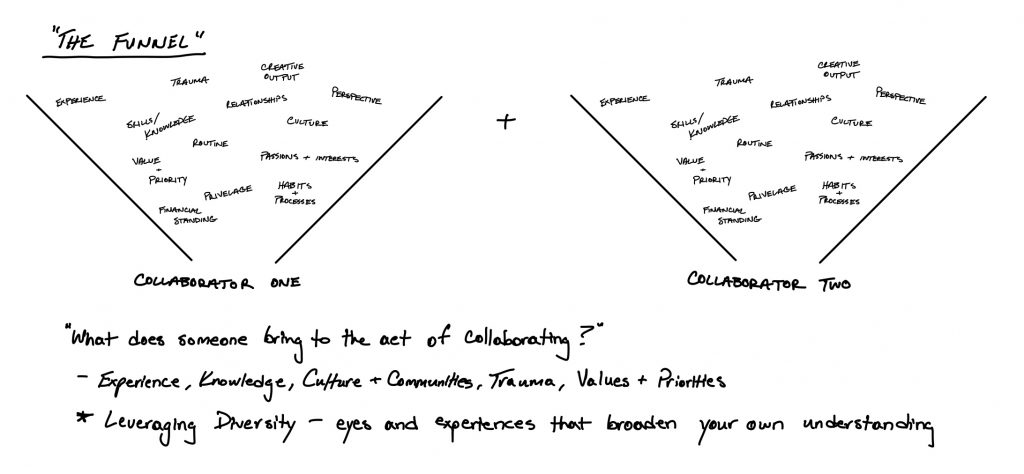
Below are further explorations of visualizing skillsets and finding ways to define the characters involved in a collaborative space. I was introduced to the “T” designer, someone who has a diverse practice with an expertise in a specific aspect of their practice.
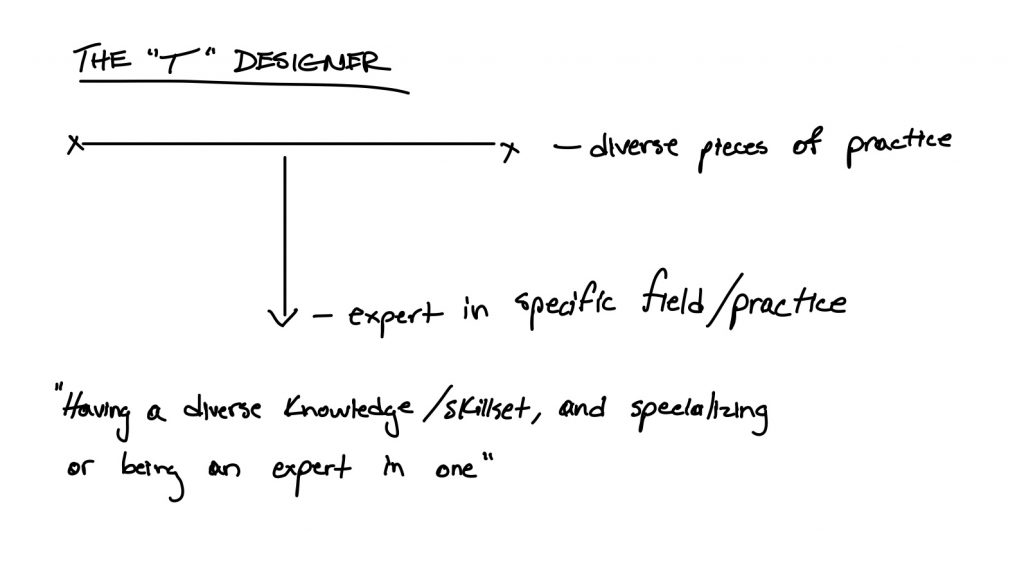
Another visualization, this time exploring the idea of Collaborators filling in the gaps of one another’s skillets, followed by a “gradient map” intended to find categories for various collaborators.
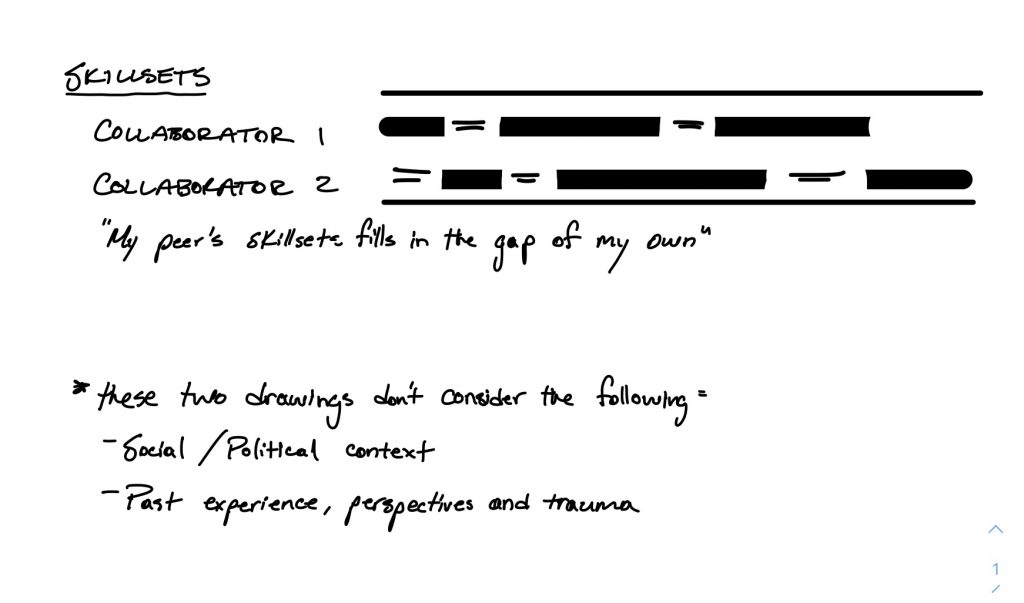
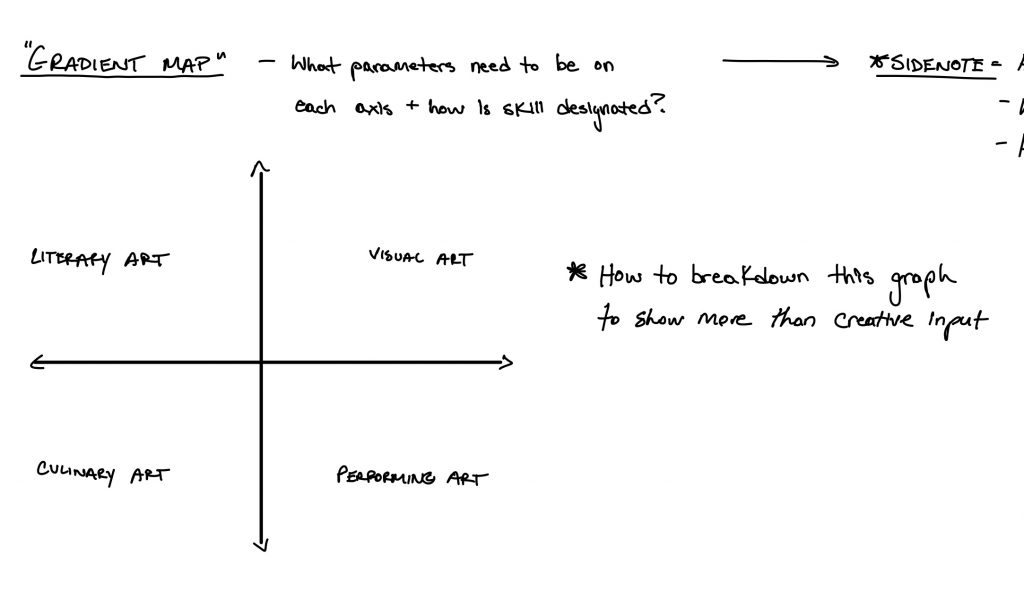
The aspect of my inquiry I am most anticipating is curating and testing collaborative games and exercises. By playing around with a variety of collaborative structures and tweaking the processes each time I hope to see what models and systems are productive and understand in what context these processes thrive in (exploring the benefits and pain points).